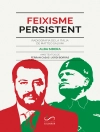Among the main stumbling blocks of European Union-Western Balkan integration are the differences in perceptions on both sides. Today, the gap between what the Western Balkan politicians and citizens think about the European Union and what the politicians and citizens in the EU member states think about the Western Balkans is probably wider than ever. This volume offers fresh insights about these misperceptions and how to possibly bridge the gap. It examines perceptions about the region’s “European perspectives” both on the side of the six Western Balkan countries – Albania, Bosnia and Herzegovina, Kosovo, Montenegro, North Macedonia and Serbia – and the key European Union member states (Italy, Germany, Croatia), international donors, USA. An analysis of the diverse views regarding the prospects of EU – Western Balkan integration is today highly relevant, in view of the current uncertainties regarding European Union’s enlargement policy, particularly after the attack of Russia on Ukraine and candidate status granted to Ukraine and Moldova.
Tabla de materias
Chapter 1: The perceptions of European Union – Western Balkan integration prospects. Introduction and overview.- Part I: Perceptions From the West.- Chapter 2: The drivers of EU financial assistance to the Western Balkans: economic, altruistic or democracy promotion motives?.- Chapter 3: Moving the Western Balkans towards the European Union: The daunting case of Bosnia and Herzegovina.- Chapter 4: Yugoslav partition and post-war EU integration: the role of Italy, 1990-2022.- Chapter 5: The Western Balkans, a German view.- Chapter 6: Imagining Europe in a new and small state: the case of Croatia.- Chapter 7: The United States in the Western Balkans: reluctant, late and distant involvement vs. quick radical fix.- Part II: Regional Perceptions.- Chapter 8: The image of the European Union in the Western Balkans.- Chapter 9: Perceptions and misperceptions of EU conditionality in the Western Balkans: a case of a “capability-expectations gap”?.- Chapter 10: European Union – Western Balkan misperceptions and paradoxes.- Chapter 11: Perceptions of regional cooperation in the Western Balkans.- Chapter 12: The foggy future of the Balkans: in or out of the European Union?.- Part III: Perceptions in Individual Countries.- Chapter 13: European Union and the Western Balkans, an endless story. The case of Albania.- Chapter 14: The role of mis-coordinated European integration mechanisms in decelerating progress in Bosnia and Herzegovina’s EU accession.- Chapter 15: Pro-EU, no matter what: European Union (mis)perceptions in Kosovo.- Chapter 16: The perception of the EU and its policies: a view from Montenegro.- Chapter 17: Reinforcing or conflicting? EU conditionality and political socialization during the 2015-2017 political crisis in the Republic of North Macedonia.- Chapter 18: Love and hate relationship: media framing of the official political communication about the EU in Serbia’smedia.- Chapter 19: Bridging the perceptions-based gap between the European Union and the Western Balkan.
Sobre el autor
Milica Uvalic is Professor at the University of Perugia, Italy. She was also member of the UN Committee for Development Policy and Assistant Minister in the first post-Milošević government in FR Yugoslavia. Recent publications include Towards Economic Inclusion in the Western Balkans coedited with W. Bartlett (Palgrave, 2022) and The Economic and Investment Plan for the Western Balkans co-authored with W. Bartlett and M. Bonomi (European Parliament, 2022).












